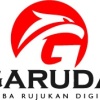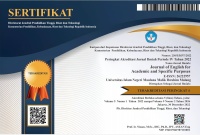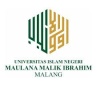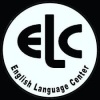THE STUDENT’S ABILITY TO WRITE A GOOD PARAGRAPH THROUGH DISCUSSION AT THE SECOND YEAR STUDENTS OF SMAN 1 PAKEL TULUNGAGUNG
Abstract
Full Text:
PDFReferences
Byrne, D. (1990). Writing Through some methods in teaching learning activities, Cambridge University Press.
Cowan, E. (1981). Writing through Discussion Way. Cambridge University Press.
Cowan, E. (1983). The Way of Teaching Writing. Ms Graw Hll International Book Company.
Framklin. V. (2002). Research Method on Language Learning. Cambridge University Press.
Fromklin, V. (2002). Writing Academic English. London: Addison-Wisley Publishing Company.
Levin, G. (1983). Short Essays, Model for Composition. New York: Harcout Brace Jowanovish, Inc.
Oshima, H. (1983). Writing with A Purpose. New York: Hoghton Mifflin Company.
Ozick, C. (1986). Teaching Writing. New York: Mc Graw Hill International Book Company.
Richard & Rodger. (1999). Teaching writing based on a discussion way. International Journal of HSS.
Rodman, Robert & Fromkin, V. (1983). An Introduction to Language. Japan: CNS College, Publishing, Holt, Richard and Winston.
Zamel. (1987). How to write a good paragraph. Cambridge University Press.
Zamel. (1987). Writing Task, An Authentic-Task Approach to Individual Writing Needs. Britain: Cambridge University Press.
DOI: https://doi.org/10.18860/jeasp.v2i1.7260
Refbacks
- There are currently no refbacks.

This work is licensed under a Creative Commons Attribution-ShareAlike 4.0 International License.






Editorial Office:
Pusat Pengembangan Bahasa
Program Khusus Pengembangan Bahasa Inggris (PKPBI)
Universitas Islam Negeri Maulana Malik Ibrahim Malang
Gedung C lantai 1
Jl. Gajayana No 50 Kota Malang, Jawa Timur, Indonesia
Kode Pos 65144, Telp/Fax : (0341) 570872
Email: jeasp@uin-malang.ac.id
JEASP : Journal of English for Academic and Specific Purposes is licensed under a Creative Commons Attribution-ShareAlike 4.0 International












